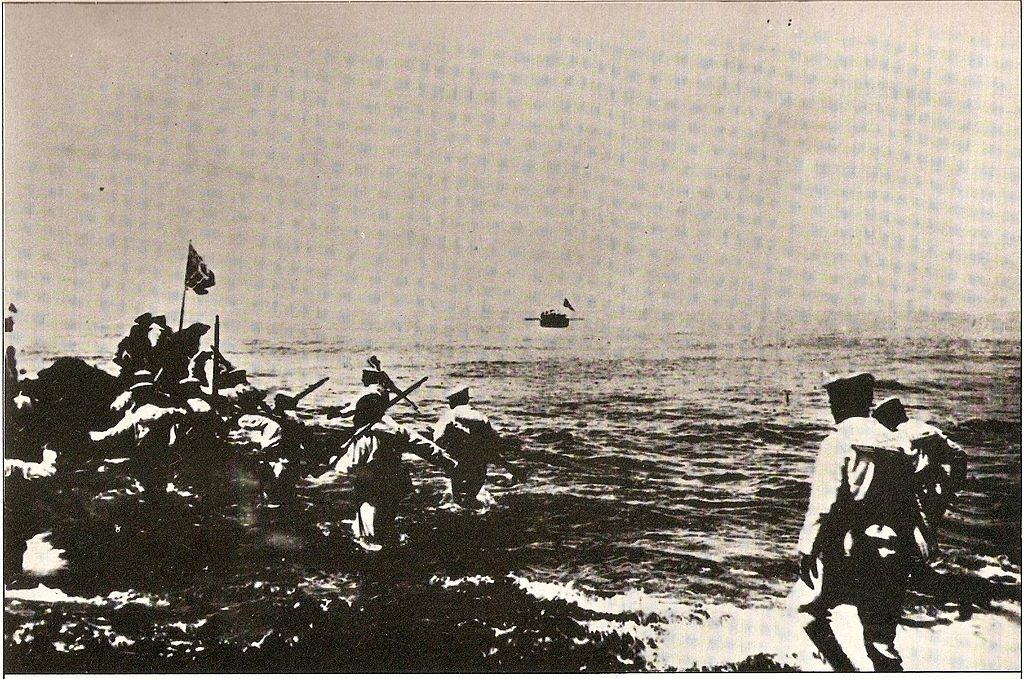The story of Captain Angelo di Carlo’s life takes us through a turbulent period in world history, and in the history of the Sicilian Mafia: through two world wars, and two more for domination of New York City by competing mafia organizations. In his lifetime, Italy would fight its old enemy, Austria-Hungary, in World War I, but before doing so, would fight a colonial war in Libya against the Ottoman Empire. The rise of fascism in Italy nearly destroyed the Sicilian Mafia before the end of WWII, but due to the political blunders of the Allies following Operation Husky, the Mafia was able to reform itself under their protection. Angelo di Carlo is considered one of the architects of this renaissance.
The Turbulent 1890s
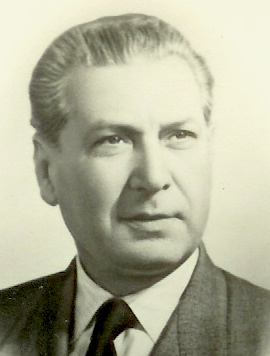
Angelo was born in February 1891 in Corleone,the eighth of thirteen children. According to the family historian, Angelo’s nephew and godson, Vincent di Carlo, their family was distinguished in Corleone by its very tall, fair, and beautiful members. Vincent reports that DNA evidence shows the family is descended from Normans, part of the Lombard resettlement of Corleone beginning in the 11th century.
The month after his birth, eleven men, most of them Sicilian immigrants, would be killed in a New Orleans prison in the largest mass lynching incident in American history.
The decade of Angelo di Carlo’s birth would see an Italian banking crisis unseat its prime minister, and the birth of a powerful worker’s movement, the Fasci Siciliani, with one of its most notable leaders, Bernardino Verro, organizing in their native Corleone. Verro would join the Fratuzzi, the local mafia, in 1893, and die at their hands in 1915. In 1930, when Angelo di Carlo lives in New York, Morello and Ferro battled for dominance over the gambling dens of Manhattan, in a war that would take Morello’s life.
In the late 1880s, Giuseppe Morello made a name for himself as a vicious cattle rustler, working with Paolino Streva, under the protection of Fratuzzi boss Giuseppe Battaglia. Morello and Gioachino Lima both fled the country in 1892, following a series of murders, including that of the Sylvan Guard, Giovanni Vella, who was investigating Morello’s crimes. The Morello-Terranova family would spend most of the next decade as agricultural laborers in the American South.
In Sicily, Angelo di Carlo received a good education: a total of ten years in public school and gymnasium, the European equivalent of American high school, followed by a year in lyceum (college), and one year in officer military school. He graduated from military academy and became an officer in the Italian Army. As an adult, Angelo was tall and strongly built, distinguished and yet physically imposing. His military rank of “Capitano” became a lifelong nickname.
Living Space
Like Germany, Italy saw itself as a natural heir of the Roman Empire. In the years leading up to Angelo’s military service, the Italian elite embraced a philosophy termed “Unredeemed Italy” (“Italia Irredenta”) that dovetailed with a fascist belief in Aryan expansionism, called “Lebensraum” in German and “spazio vitale” in Italian. Not unlike the American myth of “Manifest Destiny,” fascist doctrine included the notion that man was a species continually at war. All three movements put varying degrees of emphasis on the primacy of Nordic people, and traced their political lineage to ancient Rome. To avoid stagnation, fascists argued that Italy would once again have to expand its borders, through reclamation of lands historically occupied by culturally Italian people, and through colonization. The “Spazio vitale” effort was particularly concentrated in the Mediterranean and in Africa.
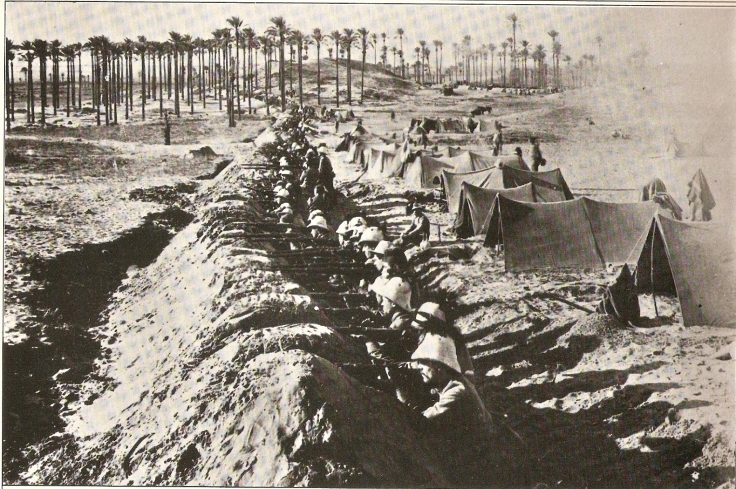
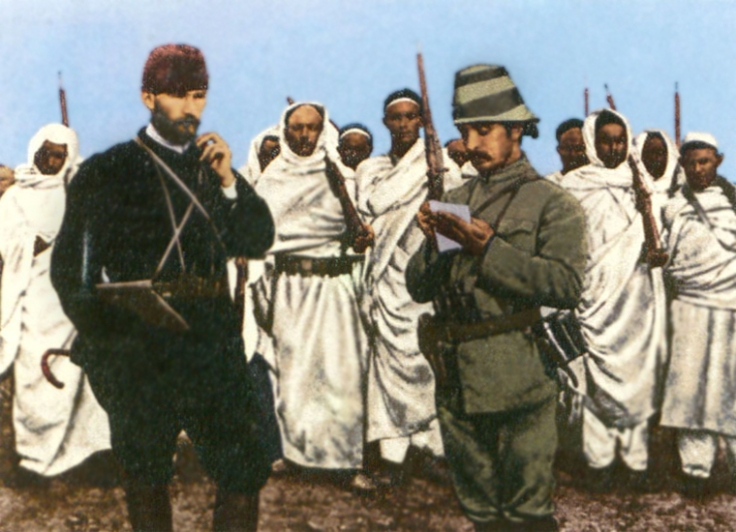
It was in pursuit of this nationalist effort that Italy declared war in 1911 on the Ottoman Empire, and Angelo di Carlo saw military service as an artillery captain in the 3rd mobile battalion of the 40th infantry, in the Italo-Turkish War, in Libya. The Italians took Libya, held at that time by the Turks, in response to losing their own territory in Eritrea. Angelo would remain in active service until 1915, just before Italian entrance into World War I, and in the reserves until 1932.
The Mafia-Camorra War
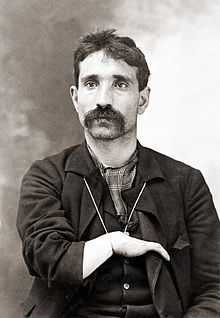
In the early years of the Great War in Europe, Italian mafias in New York were beginning to fight one another for dominance. Following the New York Stock Exchange crash of 1901, Giuseppe Morello returned north to the city, where he remarried to another Corleone native, and began a counterfeiting operation. One of Morello’s captains, Gaetano “Tommy” Reina, eventually left Morello’s organization to form his own. While Reina’s family built a reputably peaceful ice trade empire in the Bronx, the Morello organization was drawn into a bloody war for dominance over gambling in Manhattan. The Sicilians, clustered around Spanish Harlem and the Bronx, and the Napolitani Camorra, based in Brooklyn, both wanted the monopoly. This prudent neutrality would benefit Reina right up to the eve of the second great mafia war, which began with his assassination in 1930.
On the national scene at this time, Woodrow Wilson, presiding over a small, unready military, remained publicly committed to American neutrality. German submarines sank the Lusitania, a passenger vessel, killing more than a hundred American citizens, but failed to lure America into the conflict.
Reina’s former associate Nicolo’ Terranova, Giuseppe Morello’s half-brother, was killed in the Mafia-Camorra War against the Napolitani, in 1916. That year Steve LaSalle, born Stefano la Sala, was with the Terranova brothers in a plot to kill Joseph DeMarco, one of the Camorra, in retaliation for Nick’s murder. LaSalle turns up later in support of Angelo di Carlo’s release from internment during WWII.
One of the last efforts of the Camorra, when assassinations proved ineffective, was to go after Ciro Terranova’s legitimate business interests, including artichokes (Ciro’s nickname was “the Artichoke King”) and coal. These were not successful, either. Participants in the murders turned informant, including Rocco Valenti and Ralph Daniello, the latter murdered after his release from prison in 1925. Mafia-Camorra War trials continued through the 1920s for Frank Fevrola and Antonio Paretti, with the latter executed at Sing Sing in 1927.
Fasci Siciliani
Meanwhile in Sicily, Bernardino Verro, the first Socialist mayor of Corleone, was increasingly at odds with the mafia’s primary clients, the large landowners, through his organization of peasant labor. Verro was killed by his fellow Fratuzzi in 1915 and replaced with another Socialist, Antonino lo Cascio. His worker’s movement, the Fasci Siciliani, would be subverted by right-wing nationalists who would become known as the Fascists.
The following year Angelo di Carlo, recently retired from active service and still living in Italy, married his first cousin, Luisa Castro.
In the years following the Mafia-Camorra War, the US would enter WWI and help bring about a victory for the Allies on the Western Front. Turbulence—economic, political, and social—would rock both sides of the Atlantic through the 1920s, and persecution by the Fascists would send suspected mafiosi to the US in the hundreds, among them, one reserve Italian Army captain by the name of Angelo di Carlo, pursued by charges of killing a Fascist in Palermo.
Feature image credit: Italian marine troops landing on Tripoli. (Public domain)
